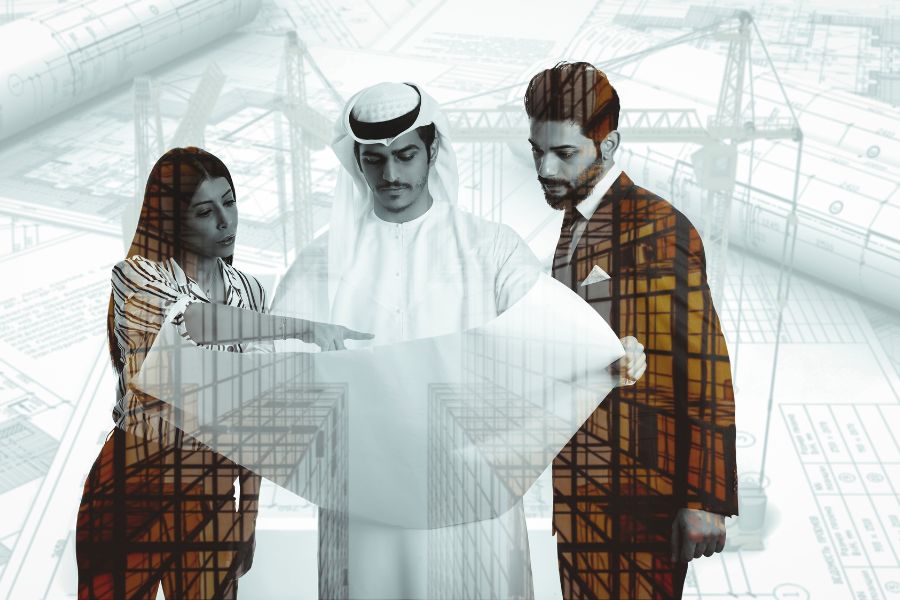Top 5 power and energy growth opportunities in the Middle East

As the region’s global role rises amidst economic and geopolitical shocks, an E&U business intelligence partner puts focus on five key trends opening new opportunites: energy partnerships, hydrogen, digitalization, decarbonization, and domestic manufacturing
The Middle East’s (ME) long-standing role in easing the world’s ‘energy trilemma’ has never been so prominent as it has become just recently.
The COVID-19 pandemic and the Russia-Ukraine War shook global economies, throwing demand and supply off balance while disrupting industries. The power and energy sector, being extremely critical for smooth functioning of economies, has been under the spotlight since the war began and sanctions were imposed on Russia.
The region’s capability to provide sustainable, affordable, and reliable supplies of energy are evident as it tries to plug the gap in Russia’s supplies to Europe. Europe’s decision to decouple its energy sector from that of Russia completely by 2027, has unlocked significant opportunities for the region, and has played a crucial role in shaping growth opportunities in the industry this year. Diversification of markets, decarbonization, decentralization, and digitalization, will be the key growth themes defining ME domestic power and energy sectors.
Expect these growth opportunities to answer the ‘where’ and the ‘how much’ of power and energy investments in the Middle East.
Growing energy partnerships
The Middle East has positioned itself as the solution to the European Union’s (EU) quest for energy security in the wake of the war. Countries in the region and Europe have signed bilateral agreements for liquified natural gas (LNG) and green hydrogen, as Europe reduces its dependence on Russian gas and marches towards a net zero economy.
The geopolitical crisis has also led countries in other parts of the world to partner with the ME to avert energy crises and to decarbonize. South Korea, for instance, signed more than sixteen memoranda with the UAE to collaborate on research and development in nuclear power, hydrogen, and renewable energy.
China has partnered with Saudi Arabia, its largest oil supplier, to boost investments in green hydrogen, solar power, and other renewable investments. Chinese presence in the ME power and energy sector will continue to grow with its $400 billion gas supply agreement with Iran, and $60 billion supply agreement with Qatar.
Such agreements are bound to accelerate completion of interconnectivity projects and associated investments in transmission and distribution (T&D) networks.
Hydrogen focus
Clean hydrogen can be produced using renewable sources, can store enormous amounts of energy for long durations, can be transported easily and cost-effectively in various forms. EU demand for hydrogen, domestic climate mitigation commitments, and availability of low-cost renewable sources of power for green hydrogen production are some factors that will drive the ME hydrogen economy. The challenges will be pertaining to achieving parity with blue/grey hydrogen and the long-distance transportation of hydrogen safely, while being cost-competitive.
The ME has access to low-cost renewable energy and can produce and transport hydrogen over long distances given its locational and resource advantages. Egypt has signed hydrogen agreements worth $83 billion with companies such as AMEA Power, Al Fanar, Total Energies, and Fortescue. It aims to become a regional hydrogen hub and secure 5% of the global market by 2040. Furthermore, it announced an $8 billion hydrogen production factory in the Suez Economic Zone and a $3 billion investment in an additional facility by Al Fanar. Similarly, the Port of Duqm, Oman, will host a hydrogen-green ammonia facility with a capacity of producing 2400 tons a day, when completed.
Digitalization
Aging assets are a challenge in the oil & gas sector. Digitalization of such assets using Internet of Things (IoT) sensors can boost return on investments significantly with minimal capital expenditure. Similarly, technologies such as leak detection and repair, remote monitoring, sensors, IoT, digital twins of power generation assets, wearables, and autonomous vehicles for worker safety are being employed in the power sector to improve efficiencies, reduce operation costs, and develop smart grids. These are backed by the Dubai 10X and Saudi’s SDAIA initiatives.
Digitalization will form a huge portion of grid investments as the ME expands and upgrades its infrastructure. Smart meters enable demand shifting during peak demand times, allowing utilities to plan and manage demand. KSA implemented twelve million meters in 14 months and finished its rollout in 2022. Bahrain, Qatar, Kuwait, Oman, and the UAE will all complete their smart meter rollouts by 2030, primarily installing them between 2023 and 2027.
Decarbonisation of key power users
Space cooling accounts for over 70% of peak electricity demand in the region. District cooling is the most energy and resource efficient solution for the region, and decarbonisation, in addition, will make it sustainable. Similarly, the region hosts 70% of the world’s desalination plants, and use of renewable energy to address the cost challenge involved in desalination is increasing. The desalination plant at NEOM (KSA), for instance, aims to power its desalination plant entirely using renewable power by 2024. Similarly, the Dubai Electricity and Water Authority (DEWA, UAE) aims to power its desalination plants using 100% renewable power by 2030.
Energy efficiency is being pursued on all fronts, with demand side management, green building mandates, industrial waste heat recovery and reuse requirements, digitalization requirements, and carbon trading initiatives being spearheaded in the region by the UAE, Saudi Arabia, Qatar, and Israel.
Divestment, diversification and domestic manufacturing
Most countries in the Gulf Cooperation Council (GCC) aim to diversify from oil-based economies to industrialized economies by 2030 and this has led to divestment in state-owned oil companies to secure funds required for diversification.
Improving the domestic manufacturing sector has been the focus of countries like KSA, UAE, Oman, and Kuwait, which mandate local content requirement in power and energy contracts, significantly impacting the industry. The region's strategic geographic location, appealing tax and ownership structures in free zones, and advanced logistics facilities make it attractive for foreign investment and local production aimed at regional exports.
Aramco has spearheaded efforts in the KSA by signing agreements with local and international companies for drilling equipment production, offshore platform construction, and subsea pipeline structure assembly. Similarly, UAE's ADNOC has collaborated with companies, such as Schneider, Honeywell, and Siemens, to manufacture components, such as valves, compressors, and gas detectors, domestically.
Energy & Utilities has covered the emerging global market for hydrogen, with extensive coverage of project announcements at COP27 last year. E&U has facilitated expert discussions of digital transformation of utility-scale renewable power and optimizing hybrid power.
Authored by Sara Venkatesan, Analyst, Global Energy & Environment Growth Opportunity Analytics Practice, Frost & Sullivan
Energy & Utilities - Middle East and Africa Market Outlook Report 2024.
This must-have report for industry players offers a thorough understanding of the latest developments, challenges, and opportunities in the region, supported by data, analysis, and expert insights.


.png)
.png)

